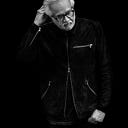Branding’s 7 Best Tools
The biggest shift today is that Brands used to be about products and services — but today “Brand” is about the people who buy those products and services.
Look at some of the world’s favorite brands like Apple, Google, Nike, TOMS, and you’ll see that they all have something in common — they all have a belief system in place that attracts others who share their beliefs.
Which makes the following seven tools so important.
Each one of these brands has a belief system that can be deconstructed into seven key passion points: creation story, creed, icons, rituals, lexicon, nonbelievers and leader.
All beacon brands are designed on top of just such a belief system, whether they built it intentionally, through gut instinct, by hiring smart people to help steer them, or luck.
This design is somewhat complicated, but so are human beings. Which is why so few Brands succeed, and so many don’t.
1. Creation story. All beacon brands have an origin story about how they got here. Every person, place or thing was started somewhere, by someone, somehow. Where are you from? Apple started in a garage, so did HP. Facebook started in a dorm room. eBay started in a bedroom office. The inspiration for Velcro was the thistle. Rome was started by two twins. It’s not just about history, it’s about legacy.
2. Creed.Every Brand has core values and beliefs, a reason for being. Think different. Just do it. E pluribus unum. Semper fi. When we establish our values and what we live for, we attract others who share those values. Justice for all. Post-Modernism. Why do we come to work in the morning?
3. Icons. These sensory impressions instantly signal who you are. Not just your Brand’s logo, but also your product design (think iPhone, Smartcar), packaging (Birchbox, Pom, Mrs. Meyers), experiences (Red Bull, Cirque de Soleil, Burning Man) and environments (Apple store, the Redwood forest, Sephora). Icons are quick concentrations of meaning that we instantly identify with and feel something about. Icons can become cultural memes: the hashtag, streaming Smosh, PewDiePie or Kim Kardashian’s figure. Our primal brains are hard-wired to know if we should approach or avoid these iconic moments. Think of the last time you entered a store for the first time, or downloaded onto a new website: in microseconds, you knew if you wanted to stay — or get the heck out.
4. If Icons are the hard-wiring of what we mean as a Brand community, Rituals are meaning in motion. Your automobile is an icon (and manufacturers have spent $millions$ explaining what that auto says about you), but driving to work is a ritual. Netflix and YouTube have famously changed the way we watch television. Smartphones are transforming dozens of daily rites into simple interfaces. Search, texting, tweets, selfies, uploading, Skype, are all rituals.
5. Sacred words. Every Brand community creates its own lexicon that is understood by those in the community — but not by outsiders. If you think of Brand communities as nations, you know the larger sense of needing to know French, English, Chinese, and other languages. Within smaller communities, you might need to know the terms of art used in the legal profession, medicine, computer design, marketing, as well as the language of fashionistas, computer hackers, baseball fans, chess players, yoga instructors, paddleboarders, skateboarders, surfers, tri-athletes, brb lmk. Gang signs are a special lexicon. So are “Iced grande skinny decaf latte,” “rotfl,” “uncanny valley,” and “Ruby on rails.”
6. Nonbelievers. Every Brand group has its haters, people who do not want to be in your community. Think of Mac versus PC. Democrats versus Republicans. Vegans/carnivores. Brooklyn/Manhattan. New York City/Los Angeles. Mom/Dad. By the way, there’s nothing like someone else telling you that what you believe is wrong, to help solidify your beliefs.
7. The leader. Every brand community has a leader. The hero or innovator who set out against all odds to recreate the world according to their own point of view. These days, leadership takes a front seat in the hero’s journey not only procuring venture capital or keeping Wall Street steady, but also instilling passion for the brand with the fan community and co-workers. Passionate fans want to know they’re supporting passionate employees.
Each of these Branding tools is a point of differentiation that, configured properly, design a storyline that triggers emotional touch points that become sticky tangent points for your Brand. Including “the Brand called you.”
As such, Brands become belief systems that attract others who share your beliefs.
The eighth tool — and this may be the most important of all, is how to distribute these seven data points across both social, digital and traditional media. Where do you tell your Creation story — on Facebook? LinkedIn? In the Annual Report? Does it become the basis of a traditional advertising campaign (like Captain Morgan Rum)? Could it become a Twitter campaign? How can your icons be spread across not only product design and packaging but across Instagram, experiential marketing and other programs?
How and where you communicate the other six data points (creed, icons, rituals, lexicon, nonbelievers and leader) becomes the basis for a strategic activation and tactical plan that plays at the top of the funnel and at the bottom of the funnel.
Today, in the co-evolution of people trying to avoid advertising — and marketers (still) trying to reach them, these seven ingredients become your best tools for creating an engaging, meaningful Branding that citizens want to believe in and belong to. After all, new ideas don’t automatically have a soul; we have to give them one.
